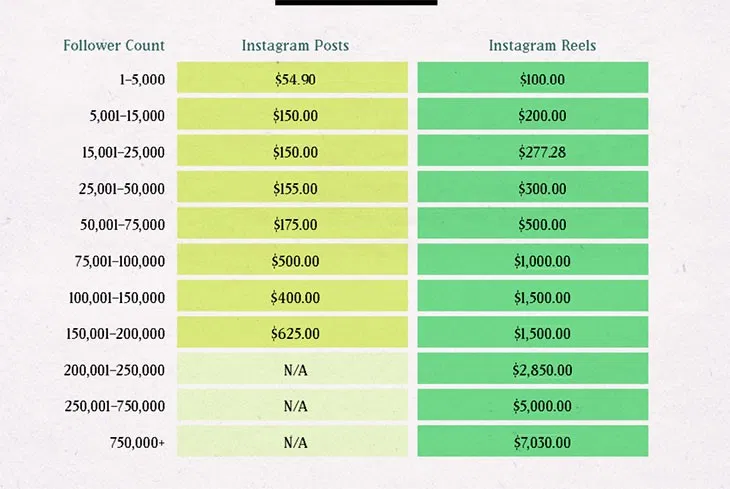LinkedIn Top Voices aka LinkedIn influencers, often hailed as the new intellectuals of the digital space, are steadily gaining prominence. However, are they truly on par with influencers on other popular UGC content platforms? Not quite yet. While Instagram influencers command higher fees due to the platform's massive reach and visual appeal, influencers on LinkedIn typically earn lower rates. For example, a micro-influencer might earn Rs 2-2.5 lakhs per post on Instagram, while on LinkedIn, the same influencer could charge around Rs 1.5-1.75 lakhs, the co-founder of Kommunity PR, Kritika Sethi Gupta told exchange4media.
While this disparity reflects the evolving stage of influencer marketing on B2B platforms like LinkedIn, it also highlights a new breed of creators—those focused on producing content that goes beyond dancing, clothing transitions, or makeup tutorials.
Some prominent LinkedIn Top Voices from India include Ankur Warikoo, founder of WebVeda, with over 2.36 million followers, who is known for his advice on entrepreneurship and personal development. Radhika Gupta, CEO of Edelweiss Mutual Fund, has garnered 637,972 followers by sharing leadership insights and financial wisdom. Sharan Hegde, a Forbes 30 Under 30 entrepreneur, also stands out, with 417,148 followers.
In July 2024, LinkedIn launched its new video experience, enabling professionals to share knowledge more immersively. With video uploads growing at a rate of 34% year-over-year and a 1.4x increase in engagement for video posts, the platform is becoming a key player for influencers, particularly in the B2B space.
In contrast, Instagram thrives on entertaining, visually appealing content. As Kritika explains, "In cases like Sharan Hegde (aka Finance with Sharan) and other financial influencers, the major difference in content strategy lies in the tone. Instagram audiences respond better to funny and quirky videos, whereas LinkedIn requires a more tailored approach that balances long-form captions with images." This nuanced approach ensures influencers connect meaningfully with each platform’s distinct audience.
Kritika adds, “For brands looking to tap into LinkedIn’s growing video ecosystem, aligning content strategies with business goals and maintaining a professional tone are critical. A combination of LinkedIn and Instagram is often the most effective strategy.” As LinkedIn continues to grow and Instagram maintains its popularity, influencers who master both will be best positioned to maximise their earning potential.
Thus, monetisation differs significantly between the platforms. Instagram influencers command higher fees due to the platform’s massive reach and visual appeal.
According to last year's Creator Rates Report by Later, Instagram is the most widely used platform for influencer marketing, with 84% of creators monetising through Instagram posts. Creators earn a median of Rs 4,500 to Rs 5.8 lakh per Instagram post or Reel, depending on their following. Interestingly, Instagram Reels are often more profitable than TikTok, with 44% of creators earning over Rs 15,000 per Reel, compared to 28% making similar earnings from TikTok videos.
On TikTok, creators charge a median rate of Rs 52,000 to Rs 1.26 lakh (around $700 to $1,700 USD) per video, but only 30% of creators reported making significant income. Facebook ranks as the second-most popular monetisation platform, but LinkedIn, Pinterest, and Twitter are less utilised, with most creators earning between Rs 15,000 to Rs 37,500 per post on these platforms.
According to Influencer.in's IMR 2024 report, Instagram remains the dominant force with 93.8% of creators and 90.2% of brands preferring it; LinkedIn is gaining ground. Although it accounts for only 4.4% of creator adoption, a noteworthy 19.5% of brands now utilise it for influencer marketing.


LinkedIn’s transformation from a networking site to a content-driven platform has been pivotal in its rise as a marketing tool. Features like short-form videos, currently in testing, reflect LinkedIn's ambition to compete with Instagram’s content capabilities. Shubham Singhal, founder of Dot Media, notes that LinkedIn short videos are increasingly “intellectually charged,” designed to foster meaningful conversations and thought leadership among a business-focused audience.
For B2B marketers, LinkedIn offers untapped potential. Shraddha Agarwal, co-founder and global CEO of Grapes told Exchange for Media, “Brands are finding their cohorts and expanding their audience base by leveraging the credibility influencers have with their professional followers.” This is especially relevant for brands targeting niche industries or decision-makers, where trust and expertise are paramount.
Opportunities for Early Adopters
Despite LinkedIn's lower adoption rate among influencers, early adopters have a significant advantage. According to Singhal, "Early adopters can establish themselves as thought leaders and grow their audience before the market becomes saturated." With fewer influencers currently focusing on LinkedIn, those who do can create targeted, high-impact content that resonates deeply with professional audiences.
Last year, Finfluencers and health influencers on LinkedIn have come under scrutiny for making misleading claims about investment strategies and medical practices. In response, the Advertising Standards Council of India (ASCI) implemented a framework requiring these professionals to disclose their affiliations with financial products, promoting transparency and consumer protection.
LinkedIn also uses AI and expert teams to block 99.1% of spam and scams through automated defences. With over 40 million professionals verified and plans to reach 100 million by 2025, its free verification builds user trust. LinkedIn's new Page Verification feature further boosts authenticity, enhancing credibility for organisations.





.jpg)
.jpg)